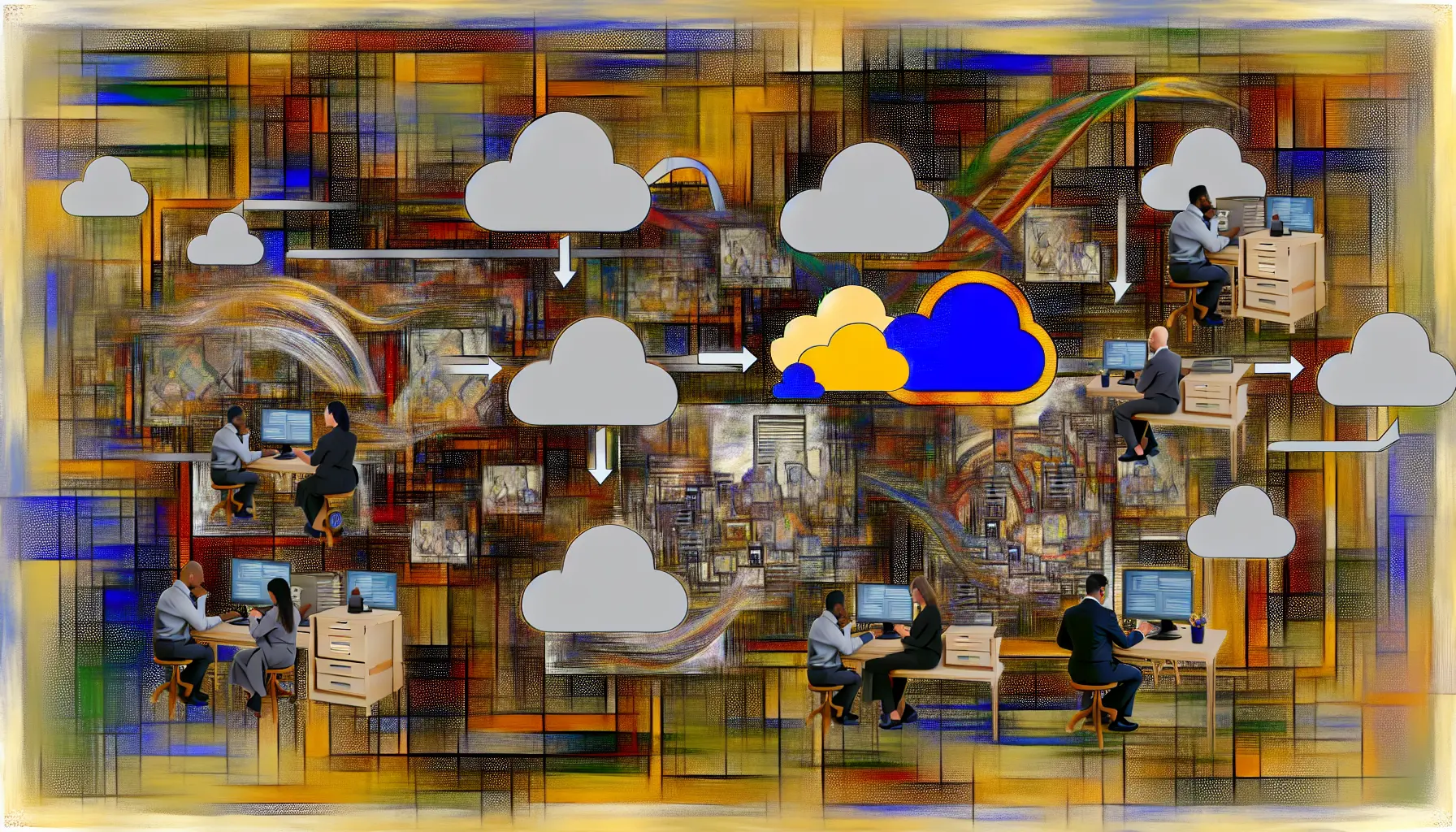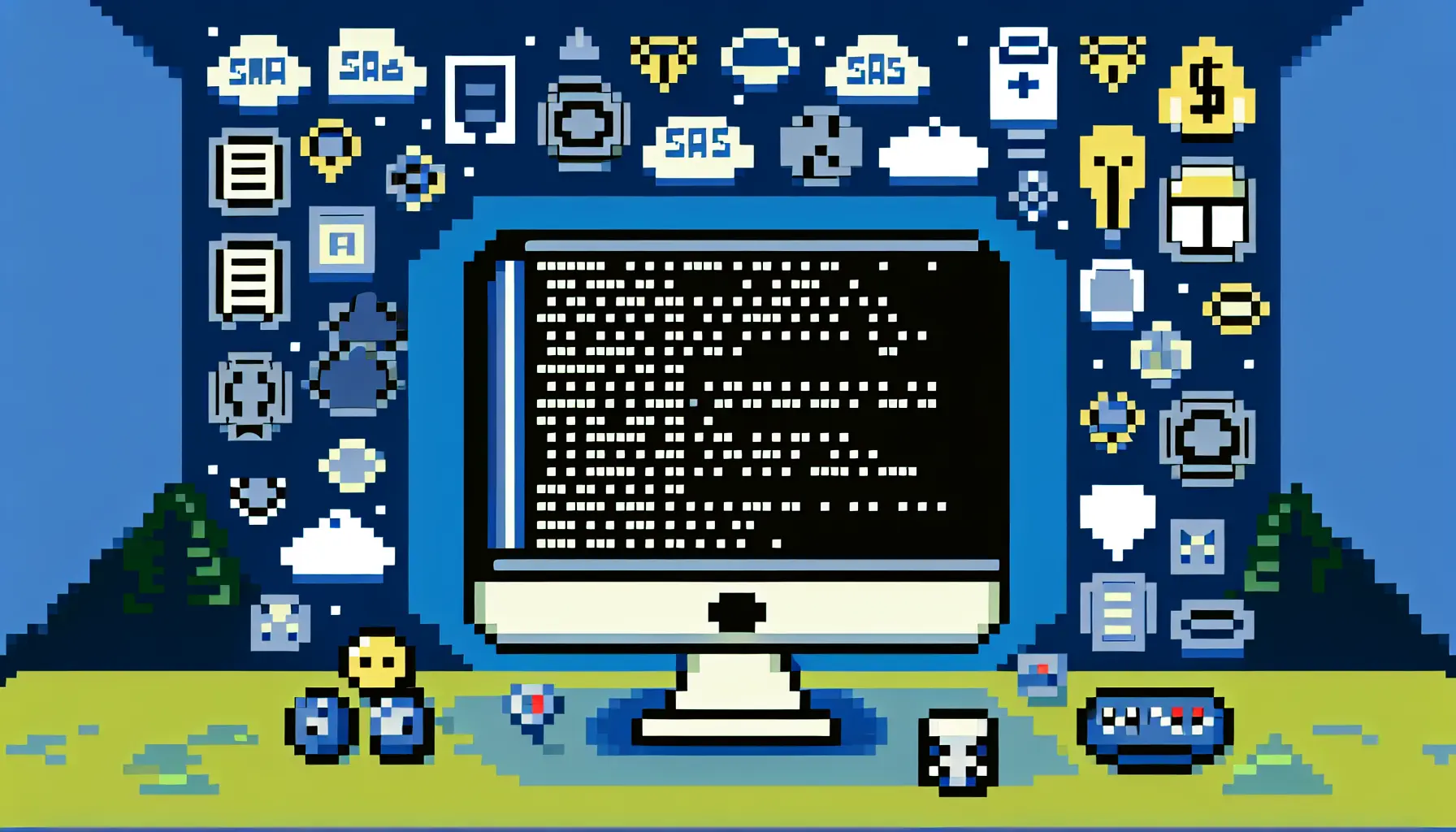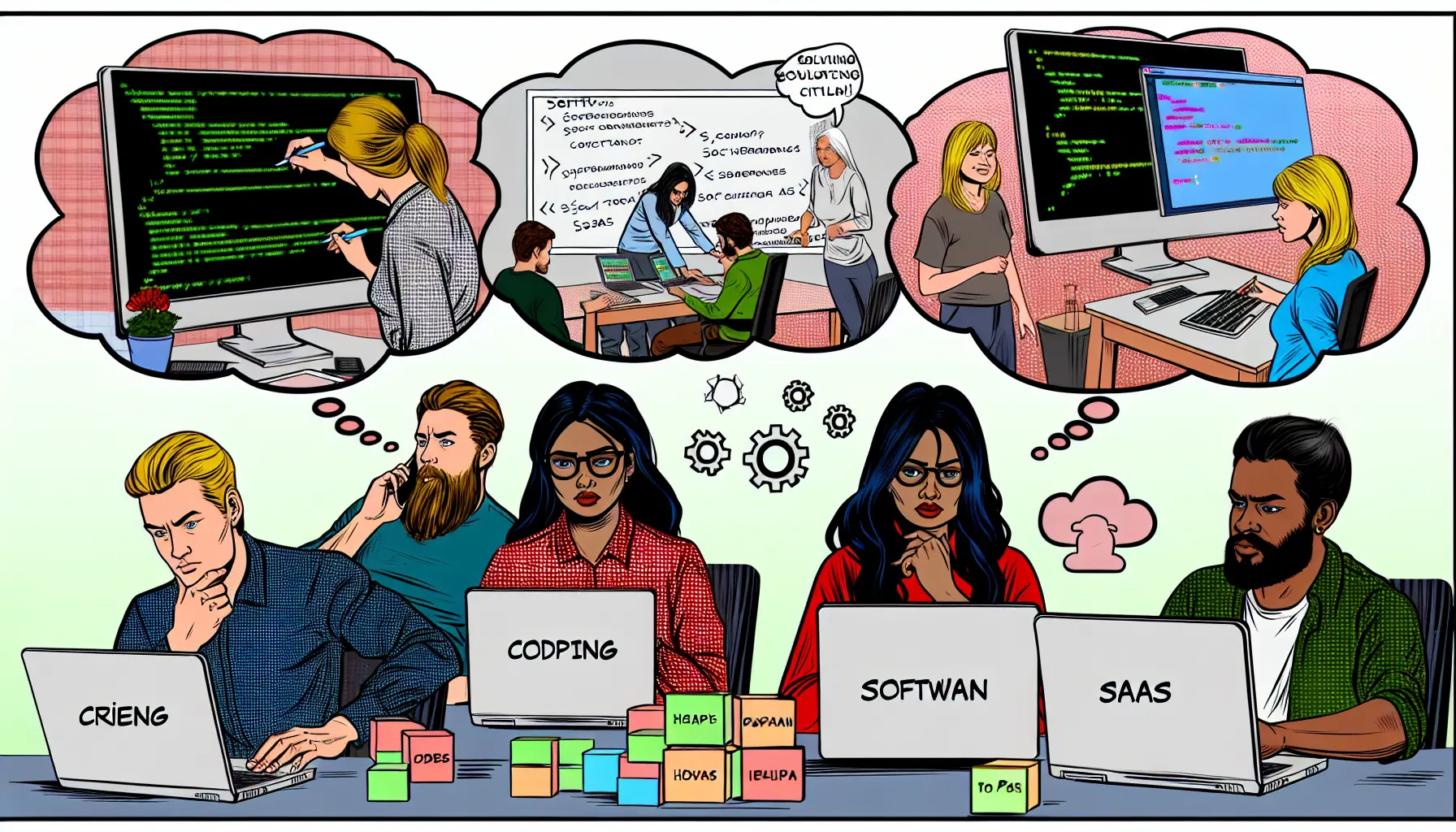Here is a reworded version of the paragraph:
**Unlocking the Power of SaaS: Market Insights**
The Software as a Service (SaaS) model has revolutionized the way software applications are delivered over the internet. To fully grasp its vast potential, it’s essential to delve into the intricacies of this concept, including its definition, growth patterns, and key market influences that drive its success.
What is SaaS?
SaaS, or Software as a Service, is a software distribution model in which applications are hosted by a third-party provider and made available to customers over the internet. This model eliminates the need for individual organizations to install and run applications on their own computers or data centers. Instead, they access the software through a web browser. This significantly reduces the need for costly hardware, maintenance, and IT support, making it an attractive option for businesses of all sizes.
Growth Trends in the SaaS Industry
The SaaS industry has witnessed exponential growth in recent years, with an increasing number of businesses adopting cloud-based solutions. The market size of SaaS continues to expand, driven by the demand for cost-effective, scalable, and accessible software solutions. The proliferation of mobile devices, the need for remote work capabilities, and the shift towards digital transformation have all contributed to the rapid growth of the SaaS industry.
Key Market Drivers for SaaS Solutions
Several factors are driving the growth of SaaS solutions in the market. These include:
-
Cost-Effectiveness: SaaS offers a subscription-based pricing model, eliminating the need for upfront costs associated with traditional software purchases and allowing businesses to pay for the software as they use it.
-
Scalability and Flexibility: SaaS solutions can easily scale to meet the needs of growing businesses and can be accessed from anywhere with an internet connection, providing flexibility for modern work environments.
-
Rapid Deployment: SaaS applications can be deployed and updated quickly, allowing businesses to stay agile and responsive to changing market demands.
-
Integration and Collaboration: SaaS solutions enable seamless integration with other software systems and support collaborative work processes, boosting productivity and efficiency.
The combination of these factors has positioned SaaS as a preferred choice for businesses seeking modern, adaptable, and cost-effective software solutions.
By understanding the essence of SaaS, as well as its impressive growth trends and market drivers, one can better appreciate the vast opportunities that exist within the SaaS development landscape.

Identifying Niche Markets within SaaS
In the vast landscape of SaaS, identifying niche markets is crucial for developing targeted and specialized solutions that can capture specific segments of the market. This section delves into the distinctions between vertical and horizontal SaaS applications, emerging industries with SaaS opportunities, and the exploration of untapped markets within the SaaS space.
Vertical vs. Horizontal SaaS Applications
-
Vertical SaaS Applications: These are niche-specific applications tailored to meet the unique requirements of a particular industry or business vertical. Examples include software designed specifically for healthcare, finance, real estate, or legal services. Vertical SaaS applications cater to the specialized needs of a specific industry, offering deep functionality and domain-specific features.
-
Horizontal SaaS Applications: In contrast, horizontal SaaS applications provide a broad set of features that can be utilized across various industries. They serve as versatile solutions for common business needs such as customer relationship management (CRM), project management, or human resource management. Horizontal SaaS solutions target a wide range of businesses, irrespective of their industry or sector.
Emerging Industries and SaaS Opportunities
As new industries and sectors evolve, they create opportunities for innovative SaaS solutions to address their specific challenges and demands. Emerging fields such as renewable energy, telemedicine, e-learning, and sustainable technologies present fertile ground for the development of tailored SaaS applications that can optimize processes and workflows unique to these sectors.
Untapped Markets in the SaaS Space
Identifying untapped markets involves recognizing areas where existing SaaS solutions are inadequate or non-existent. This could involve targeting geographical regions with specific regulatory requirements, exploring underserved segments of the market, or uncovering niche use cases with unmet technology needs. Understanding the unique pain points of these untapped markets can lead to the development of disruptive and high-demand SaaS applications.
By understanding the distinctions between vertical and horizontal SaaS applications, recognizing emerging industries with SaaS opportunities, and identifying untapped markets, SaaS developers can strategically position themselves to capitalize on niche markets and drive innovation in the SaaS landscape.

Technological Advancements Driving SaaS Development
The continuous evolution of technology plays a pivotal role in shaping the landscape of SaaS development. This section emphasizes the significant impact of AI and machine learning, the influence of big data analytics, and the evolving role of cloud computing in driving innovation and growth within the SaaS industry.
The Role of AI and Machine Learning
-
Predictive Analytics: AI and machine learning enable SaaS applications to analyze large datasets and predict future trends, user behaviors, and performance metrics. This allows businesses to make data-driven decisions and optimize their operations for heightened efficiency and effectiveness.
-
Personalization and Automation: By leveraging AI, SaaS solutions can provide personalized user experiences, automate routine tasks, and offer tailored recommendations, enhancing user engagement and satisfaction.
-
Enhanced Security Measures: Machine learning algorithms can strengthen data security in SaaS applications by identifying and responding to potential threats in real-time, thereby fortifying the overall cybersecurity posture.
Influence of Big Data Analytics
-
Insightful Decision-Making: SaaS applications integrate big data analytics to provide businesses with actionable insights derived from the analysis of voluminous and diverse data sources. This empowers organizations to make informed decisions and identify opportunities for optimization and growth.
-
Performance Monitoring and Optimization: Big data analytics allows SaaS developers to monitor application performance, identify bottlenecks, and fine-tune the software to deliver optimal user experiences and operational efficiency.
-
Personalized Marketing and Customer Engagement: By harnessing big data, SaaS solutions can personalize marketing strategies, tailor customer interactions, and deliver relevant content, thereby enhancing customer acquisition and retention.
The Impact of Cloud Computing Evolution
-
Scalability and Flexibility: Cloud computing advancements have facilitated the scalability of SaaS applications, allowing them to adapt to fluctuating demands and accommodate the rapid growth of user bases, ensuring seamless performance and accessibility.
-
Cost Efficiency and Accessibility: Cloud-based infrastructure has reduced the barriers to entry for SaaS startups, minimizing capital expenditures, and enabling easy access to a broad range of resources and services, fostering innovation and entrepreneurship.
-
Global Reach and Collaboration: Cloud technologies have empowered SaaS solutions to reach global audiences and facilitate remote collaboration, enabling businesses to expand their market presence and operate efficiently in distributed environments.
The integration of AI and machine learning, the utilization of big data analytics, and the evolution of cloud computing are pivotal technological advancements driving the development and innovation of SaaS solutions, positioning them for sustained growth and competitiveness in the modern tech landscape.

Business Model Innovation for SaaS Startups
The success of a SaaS startup heavily depends on its business model and pricing strategy. This section explores various innovative approaches, such as subscription models, value-based pricing, freemium offerings, and building ecosystems to drive customer acquisition and retention.
Subscription Models and Value-Based Pricing
-
Recurring Revenue Streams: Subscription-based models, including monthly or annual subscriptions, provide a predictable revenue stream for SaaS startups, fostering financial stability and long-term customer relationships.
-
Value-Based Pricing: This approach aligns the pricing of SaaS offerings with the value derived by the customer, allowing for flexible and customized pricing structures based on usage, features, or outcomes delivered, creating a win-win situation for both the customer and the provider.
Freemium Models and Customer Acquisition
-
Feature-Limited Free Plans: Offering a feature-limited free plan (freemium model) allows SaaS startups to attract a large user base, build brand recognition, and demonstrate the value of their product before converting users into paying customers through up-selling or additional feature offerings.
-
Customer Onboarding and Upselling: SaaS startups utilize freemium models not only as a means of customer acquisition but also as an opportunity to upsell to premium features or plans, ensuring a smooth and valuable transition for users seeking expanded functionalities and advanced capabilities.
Building Ecosystems and Network Effects
-
Integration and Expansion: SaaS startups can build ecosystems around their core product, integrating with complementary third-party applications and services to provide a comprehensive solution, thereby creating network effects that increase the value proposition for customers and drive organic growth.
-
Community and Collaboration: By fostering a community of users, partners, and developers, SaaS startups can create a collaborative environment, encouraging knowledge sharing, innovation, and advocacy, which can lead to increased user engagement and loyalty.
The innovative approaches to business models and pricing strategies, including subscription models, value-based pricing, freemium offerings, and ecosystem building, are key components in the success and sustainability of SaaS startups, enabling them to capture and retain a loyal customer base in a competitive market.

Challenges and Solutions in SaaS Development
The journey of SaaS development is riddled with challenges, ranging from data security and privacy concerns to scalability and infrastructure limitations, as well as the need to adapt to ever-changing regulatory landscapes. This section focuses on identifying these challenges and proposing viable solutions to address them effectively.
Addressing Data Security and Privacy Concerns
-
Data Encryption and Compliance: SaaS developers must implement robust encryption mechanisms and adhere to stringent data privacy regulations (such as GDPR and CCPA) to protect sensitive customer data and ensure compliance with privacy laws and industry standards.
-
Secure Access Management: Implementing strong user authentication, access controls, and multi-factor authentication protocols can safeguard SaaS applications from unauthorized access and data breaches, bolstering overall security posture.
Scalability and Infrastructure Challenges
-
Cloud Resource Management: Efficient utilization of cloud resources and the adoption of scalable infrastructure components, such as serverless computing and auto-scaling, can mitigate challenges related to sudden spikes in user demand and the need for seamless scalability.
-
Performance Monitoring and Optimization: Constant monitoring, load testing, and performance optimization of SaaS applications are crucial to maintaining system resilience and ensuring consistent performance under varying workloads.
Adapting to Changing Regulatory Landscapes
-
Regulatory Compliance Monitoring: SaaS developers need to stay abreast of evolving regulations and ensure continuous compliance by actively monitoring legal requirements and promptly updating their applications and practices in response to regulatory changes.
-
Legal Expertise and Collaboration: Engaging legal experts and forming partnerships with regulatory compliance services can provide invaluable guidance and support in navigating complex and dynamic regulatory environments, mitigating legal risks and liabilities.
By proactively addressing data security and privacy concerns, effectively managing scalability and infrastructure challenges, and adapting to changing regulatory landscapes, SaaS developers can build resilient and compliant applications that inspire trust and confidence among their user base.

Case Studies of Successful SaaS Ventures
The success stories of SaaS ventures provide valuable insights into the strategies and innovations that have propelled them to prominence within the industry. This section delves into disruptive innovations, companies that have mastered niche markets, and the invaluable lessons gleaned from SaaS failures, offering a comprehensive understanding of the factors influencing SaaS venture success.
Disruptive Innovations in the SaaS Industry
-
Salesforce: With its pioneering cloud-based CRM platform, Salesforce revolutionized the SaaS landscape, demonstrating the potential of subscription-based software delivery and setting new benchmarks for customer relationship management solutions.
-
Slack: Slack’s collaboration platform disrupted traditional communication tools by offering a user-friendly, intuitive interface that reshaped workplace communication, showcasing the power of user experience in driving SaaS adoption.
Companies That Have Mastered Niche Markets
-
Zenefits: By focusing on HR management tools and compliance automation, Zenefits penetrated the niche market of small and medium-sized businesses, addressing specific pain points and regulatory complexities to consolidate its position as a leader in its domain.
-
Shopify: Targeting e-commerce and online retail, Shopify’s SaaS solution enabled entrepreneurs and small businesses to establish and manage their online stores with ease, underscoring the potential of niche-focused SaaS platforms.
Lessons Learnt from SaaS Failures
-
Quibi: The short-form streaming platform’s failure highlighted the pitfalls of over-investing in content without validating market demand, emphasizing the importance of market research and aligning product offerings with user preferences.
-
Parse: Despite initial success, the shutdown of Parse’s mobile app development platform underscored the significance of transparent communication, data portability, and ensuring customer trust in the event of a business closure or transition.
Studying the trajectories of successful SaaS ventures, understanding their disruptive innovations, niche market mastery, and the pivotal lessons learned from SaaS failures, provides aspiring entrepreneurs and developers with invaluable knowledge and inspiration for navigating the ever-evolving SaaS landscape.
Integrating SaaS with Other Emerging Technologies
The synergy between SaaS and other emerging technologies paves the way for numerous opportunities and innovations. This section explores the integration of SaaS with the Internet of Things (IoT), leveraging blockchain for enhanced SaaS security, and the convergence of SaaS in the age of edge computing, highlighting the potential for cross-pollination and value creation.
SaaS and the Internet of Things (IoT)
-
Data Fusion and Analysis: The fusion of SaaS capabilities with IoT data enables the analysis of massive, diverse datasets generated by IoT devices, empowering businesses to derive actionable insights and unlock new value streams from IoT-generated data.
-
Remote Device Management: SaaS platforms can facilitate remote management, monitoring, and control of IoT devices, streamlining device connectivity, data collection, and operational management for IoT-based applications and solutions.
Leveraging Blockchain for Enhanced SaaS Security
-
Immutable Data Records: Integrating blockchain with SaaS applications allows for the creation of tamper-proof audit trails, enhancing data integrity, transparency, and security, fostering trust and compliance within SaaS ecosystems.
-
Decentralized Identity Management: Blockchain-based identity and access management solutions can strengthen user authentication, authorization, and identity verification within SaaS platforms, mitigating security vulnerabilities and privacy risks.
SaaS in the Age of Edge Computing
-
Edge-Enabled Application Deployment: Leveraging edge computing, SaaS solutions can deploy application logic and data processing closer to end-users and IoT devices, reducing latency, enhancing real-time responsiveness, and optimizing bandwidth utilization.
-
Distributed Data Processing: SaaS applications integrated with edge computing frameworks can efficiently process and analyze data at the network edge, enabling rapid insights and actionable intelligence, particularly in scenarios with strict latency requirements.
The seamless integration of SaaS with emerging technologies such as the Internet of Things, blockchain, and edge computing presents a myriad of opportunities to augment capabilities, enhance security, and unlock new frontiers of innovation within the SaaS landscape.

Frequently Asked Questions
Addressing common queries about SaaS development opportunities can provide valuable insights for readers seeking clarity on the future outlook, how to identify opportunities, best practices for building a successful SaaS business, and common mistakes to avoid.
What is the future outlook for SaaS development opportunities?
The future of SaaS development is promising, with sustained growth expected as businesses continue to embrace cloud-based solutions. Factors such as increasing digital transformation, the rise of remote work, and evolving customer needs point to a continued expansion of SaaS offerings across diverse industries.
How can one identify the next big opportunity in SaaS?
Identifying the next big opportunity in SaaS involves market research, understanding emerging technology trends, and recognizing underserved or evolving industry needs. By staying informed about market demands, technological advancements, and customer pain points, developers can pinpoint areas ripe for innovative SaaS solutions.
What are the best practices for building a successful SaaS business?
The best practices for building a successful SaaS business include focusing on user experience, continuous innovation, customer feedback integration, robust security measures, scalable architecture, effective pricing strategies, and building a strong and responsive customer service culture.
What common mistakes should new SaaS developers avoid?
New SaaS developers should be cautious of common pitfalls such as premature scaling, neglecting data security, underestimating regulatory compliance, overlooking user experience, and failing to adapt to evolving market dynamics. Understanding these potential pitfalls can help developers navigate the challenges of SaaS development more effectively.
The FAQs cover important aspects of SaaS development opportunities, offering insights into the future outlook, opportunity identification, best practices, and common mistakes to avoid, serving as a valuable resource for readers looking for guidance in the dynamic landscape of SaaS innovation.
